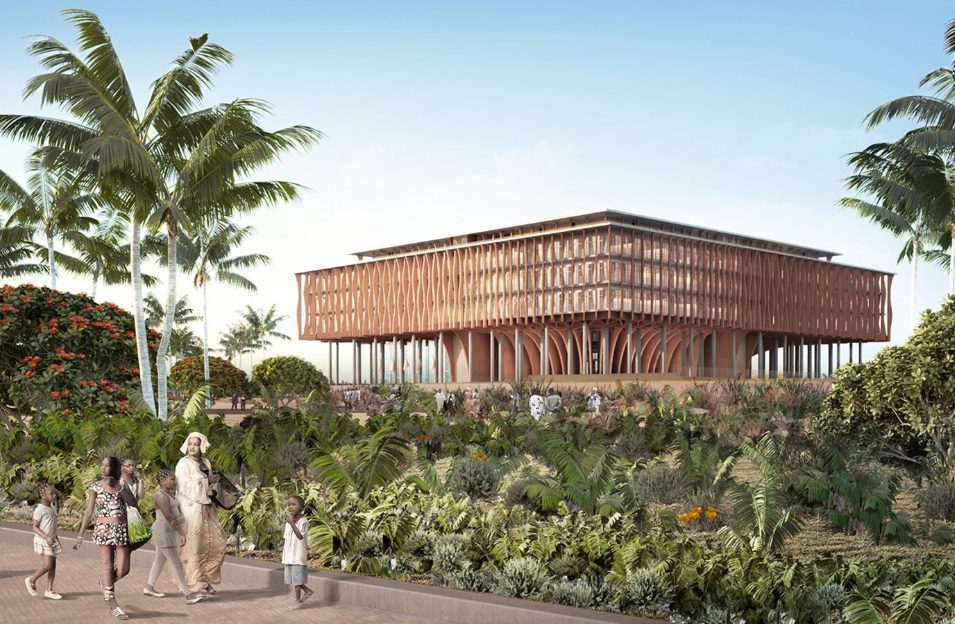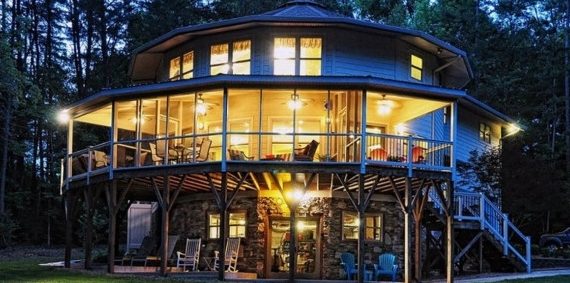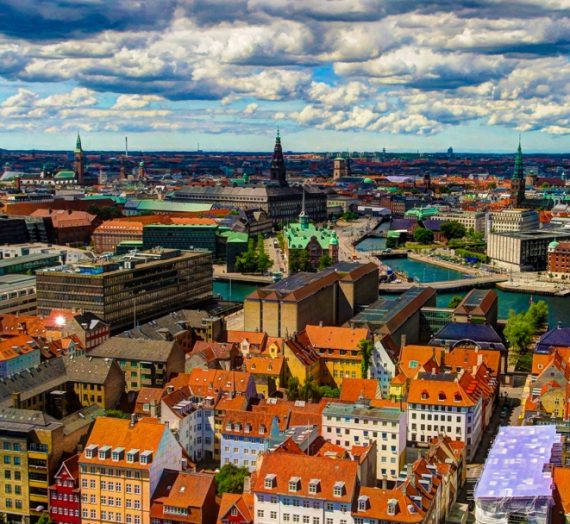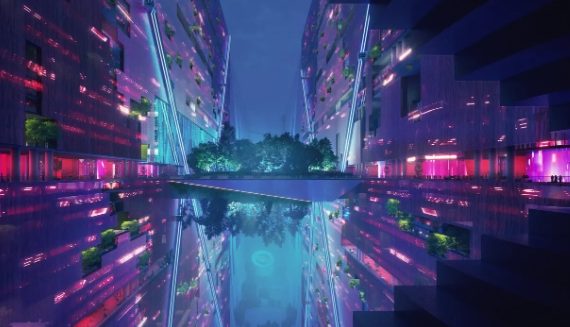Nature is the ultimate creator, and architects have been inspired by it throughout history. Some architects imitate organic shapes and concepts directly, while others are captivated by the diversity of nature and incorporate it into their designs. Here are some beautiful examples of how designers blend strict geometry with tree-like forms, incorporating principles inspired by nature.
Buildings inspired by the African negotiation tree
In 2017, when designing the pavilion for London’s Serpentine Gallery, architect Francis Kere was inspired by the central negotiation tree in Gando, Burkina Faso. The large tree serves as a gathering place for various events such as community meetings or ceremonies, and under its canopy, amazing performances take place.
The pavilion designed by Diebedeau Francis Kere for the Serpentine Gallery in London in 2017 takes its inspiration from a negotiation tree located in Gando, Burkina Faso. The design features a large, expansive roof that resembles a tree canopy, made from wooden plates and covered with a transparent protective layer. This design provides both shade and protection from the rain, much like a tree’s leaves. The main structure of the pavilion is made from steel, with a central bowl filled with water that trickles down through a circular opening in the “trunk” of the building. The walls of the pavilion are perforated with traditional patterns to allow for air circulation and visibility into the interior of the building.
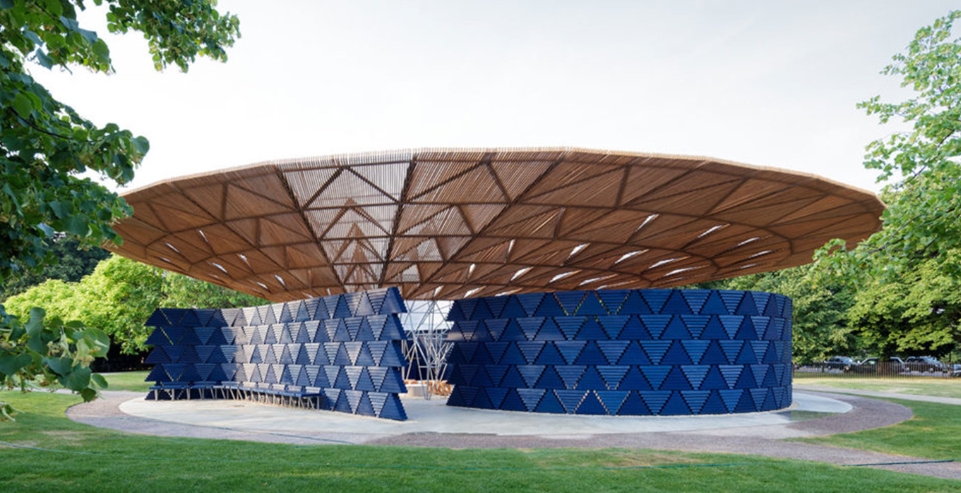
The Serpentine pavilion is now permanently displayed at the Ilham Gallery in Kuala Lumpur, where the climate is ideal for its use.
Kere has other works inspired by trees, such as a gazebo at the Tippet Rise Art Center in Montana. It is entirely constructed of wood and features an undulating design that showcases the annual rings of the logs.
The latest work of Diebedo Francis Kere is the Benin National Assembly building, set to be completed in 2023, which incorporates the image of the African negotiation tree.
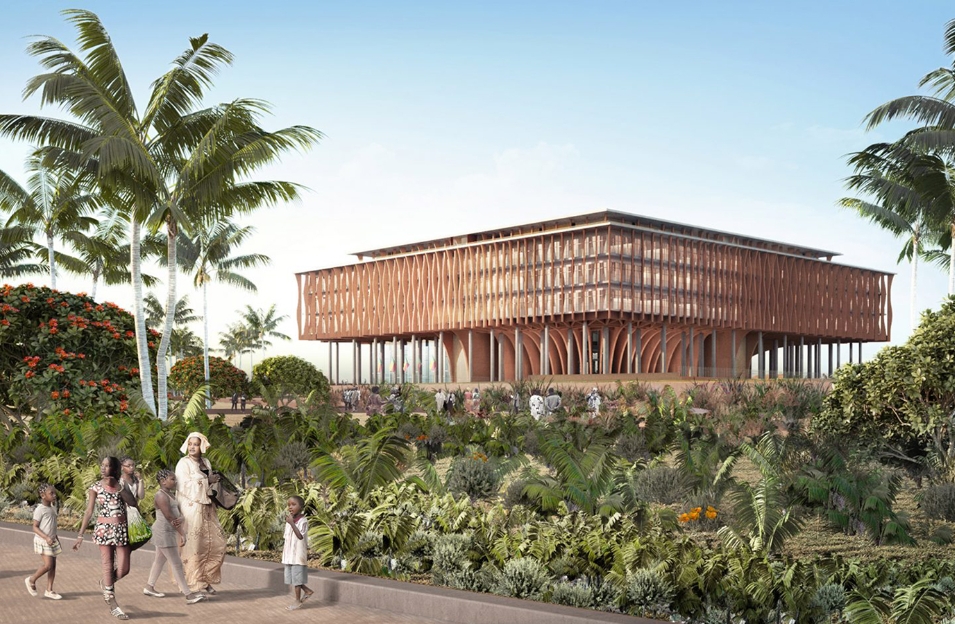
House of Music in Budapest
The Japanese architect Su Fujimoto was commissioned to design a concert hall in the center of a city park in Budapest. He was inspired by the local trees and decided to create an overhanging roof that resembles a gazebo. The space under the roof is where artists perform music, creating a unique and natural environment for musical events.
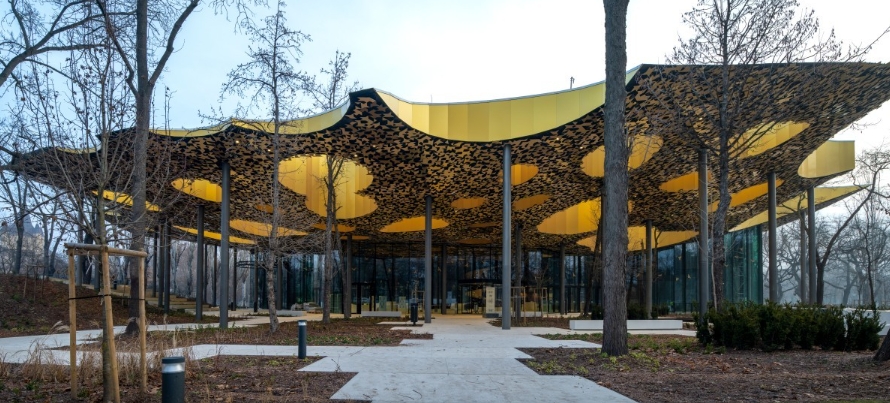
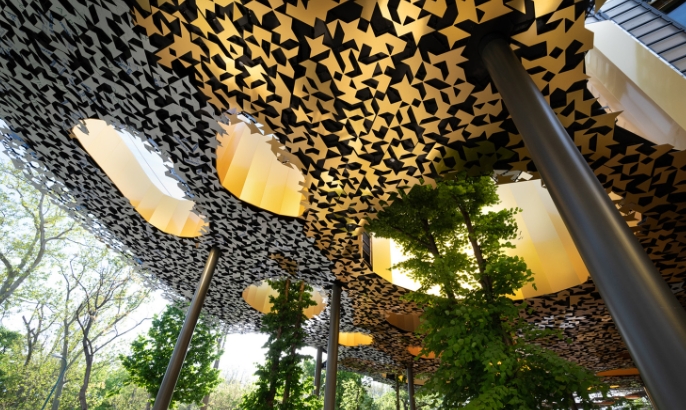
The concert hall in the heart of a city park in Budapest was designed by Japanese architect Su Fujimoto. He was inspired by the local trees and created an overhanging roof that resembles a gazebo, where artists can perform music. The structure is supported by many thin pillars, and the roof has 100 holes that serve as light wells and allow trees to grow through the canopy. The inside of the roof is covered with metal “leaves,” creating a pixelated effect that can be seen when looking up. This pattern is also incorporated into the basement, which houses galleries, concert halls, and a domed space with a spherical acoustic effect for live music performances. The complex opened in January 2022.
Allen Lambert Gallery in Toronto
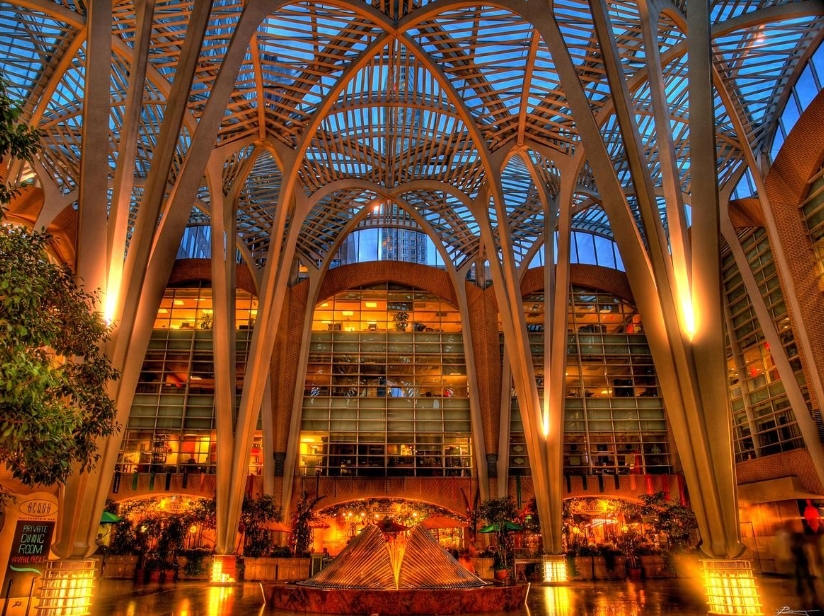
The Allen Lambert Gallery, a glazed steel frame building, was designed by architect Santiago Calatrava and was inspired by the fractal geometry of a maple tree. It was built in 1992 and connects the financial and entertainment districts of Toronto.
The design of Calatrava resembles a country road framed by maple trees. The center of the building features a plaza where tree-like steel structures intersect, creating a metal forest of white arches that cross each other.
Knowledge Forest Library in Beijing
The roof of the Beijing public library building features a canopy of “trees” inspired by the spade-shaped leaves of the Chinese ginkgo tree. The crowns of the “trees” have built-in photovoltaic cells that provide power for the building. The columns of the “trees” conceal the internal building systems, such as climate control, lighting, acoustics, and a rainwater collection and sewerage system.
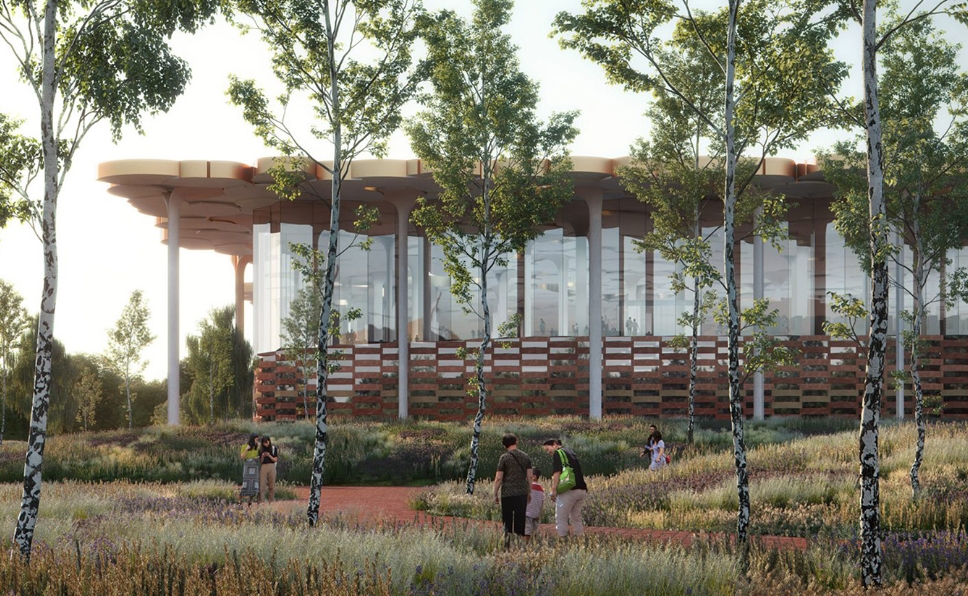
Construction of the Beijing public library project, inspired by the spade-shaped leaves of the Chinese ginkgo tree, began in 2018 and is expected to be completed by the end of 2022. In accordance with the concept of a forest, the flooring under the roof is zoned to imitate a natural canopy, and transparent glass walls provide a glimpse into the cozy interior from the street. The roof of the building features a canopy of interconnected “trees” with built-in photovoltaics in their crowns, while the columns of the “trees” house the building’s internal systems, including climate control, lighting, acoustics, as well as a rainwater collection and sewage system.
Silk Tree Park in Tehran
Silk Tree Park was designed with accessibility in mind and incorporates nature into its design. Raha Ashrafi and Marziah Zad, the architects behind the park, created a safe space for people with hearing disabilities to communicate and interact with nature. The park is located next to the Tehran Sports Federation of the Deaf and Hard of Hearing, and construction was completed in 2022.
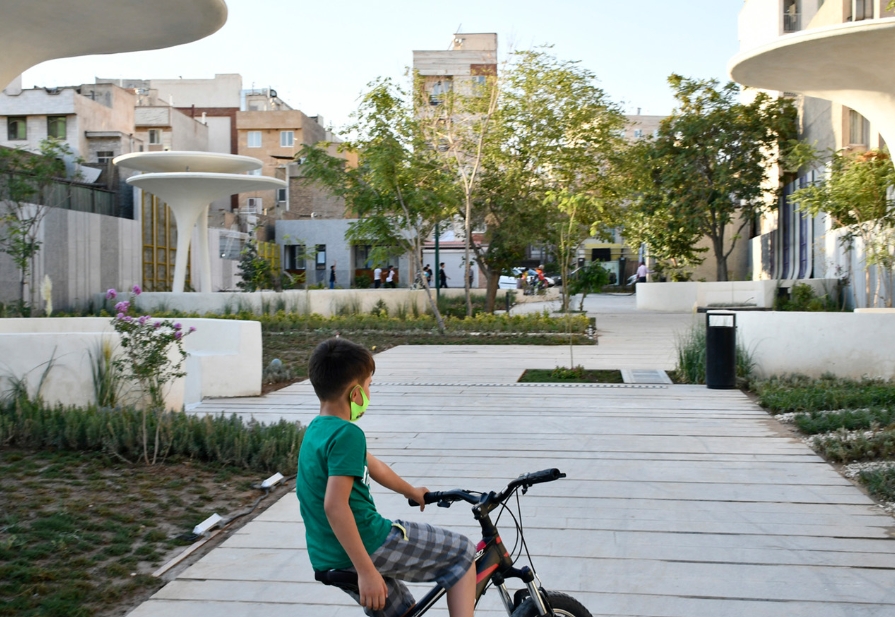
The park features mushroom-shaped umbrellas that provide shade over circular benches. The entrances to the gazebos are positioned along paths, and the social areas are surrounded by vegetation to reduce the chance of sudden appearances from angles that are visually inaccessible to deaf visitors. The silk trees and plants are combined with the umbrella pavilions, creating a forest of artificial and natural elements.
Slavonski Brod bus station, Croatia
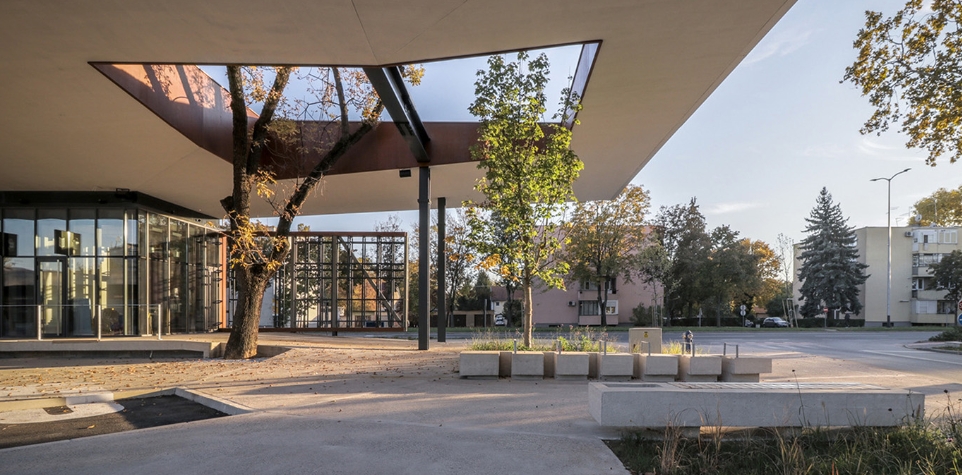
The latest project by the architectural firm SANGRAD+AVP, the Slavonski Brod bus station, not only resembles a natural gazebo formed by trees but also seamlessly integrates into the surrounding landscape. The transportation hub comprises three elongated buildings with a pitched roof that connect the new part of the station to the old one. There are also tall trees growing through openings in the building’s structures. Like in the Beijing library project, transparency plays a crucial role.
Supertree Grove, Singapore
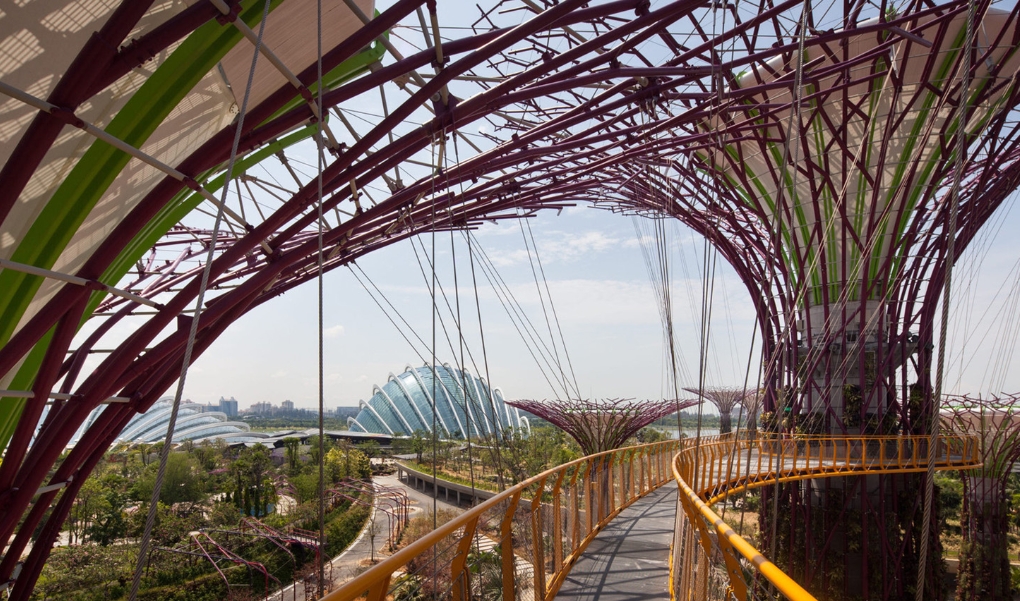
The Gardens by the Bay in Singapore is a harmonious blend of technology and nature for the benefit of all. The park features 18 towering mechanical trees that form a unique vertical forest. Ranging from 20 to 50 meters high, these structures generate solar energy, collect rainwater, and act as air ducts to nearby storage facilities. At night, the crowns of the trees are illuminated, providing a beautiful display for visitors. Additionally, the park’s botanical garden boasts over 22,000 species of plants from all continents, and visitors can walk along a 128-meter suspended platform encircling these metal giants. These structures serve not only their technological function, but also as frames for the lush vegetation.

